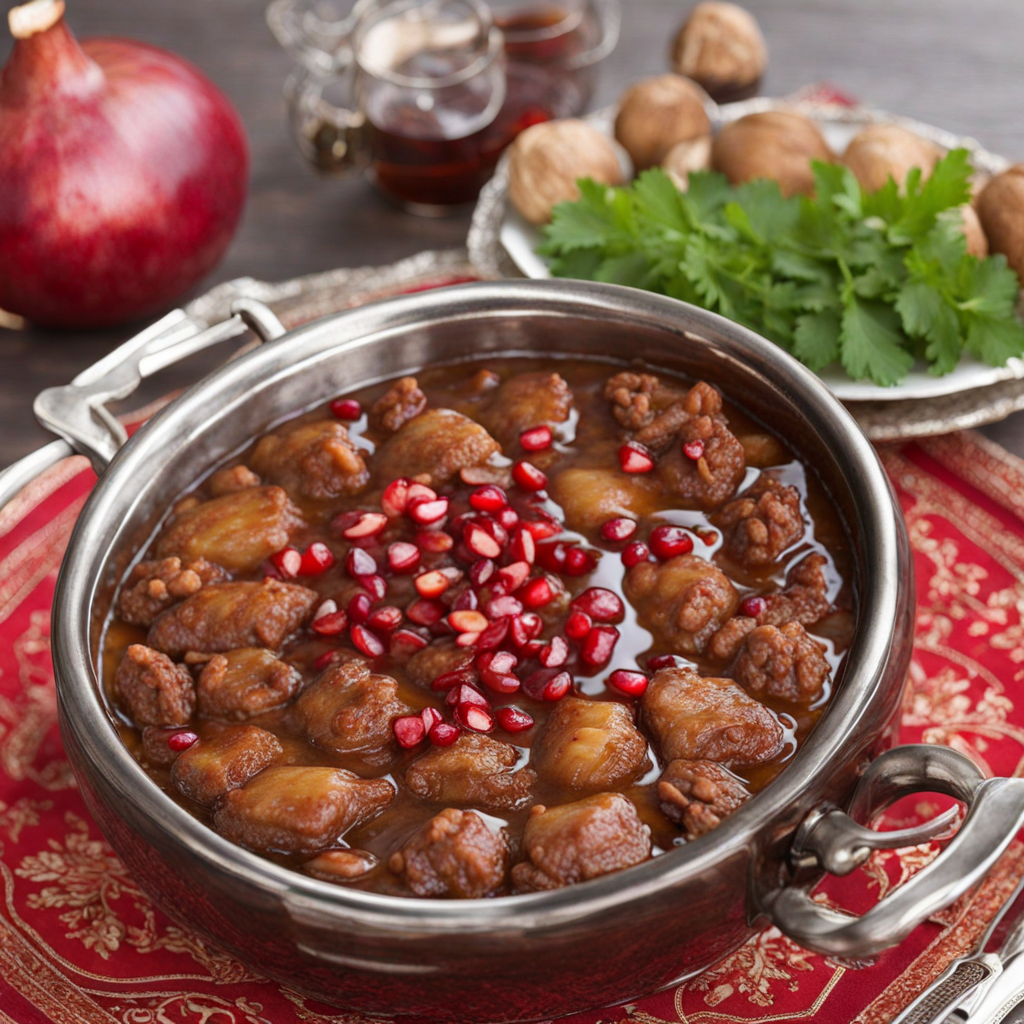Tepsi Baytinijan
Tepsi Baytinijan is a traditional Iraqi dish that beautifully showcases the rich flavors and culinary heritage of the region. At its core, this dish features layers of eggplant, a staple ingredient in Middle Eastern cuisine, which is sliced and then fried or roasted to enhance its natural sweetness and smoky flavor. The eggplant is complemented by a hearty mixture of ground meat, typically lamb or beef, seasoned with a blend of spices such as cumin, coriander, and cinnamon. This aromatic combination creates a delightful depth of flavor that is both savory and comforting. In addition to the eggplant and meat, Tepsi Baytinijan often includes a variety of vegetables, such as tomatoes, bell peppers, and onions, all of which contribute to its vibrant color and texture. The dish is typically layered in a large, shallow baking dish, allowing the ingredients to meld together beautifully during the cooking process. The final touch often involves a generous pour of a tomato sauce, which not only adds moisture but also enhances the overall taste, tying all the components together in a harmonious blend. Served hot, Tepsi Baytinijan is usually accompanied by a side of rice or flatbread, making it a satisfying meal that caters to both the palate and the appetite. The dish is not just a feast for the taste buds but also a feast for the eyes, with its colorful layers and enticing aroma wafting through the air. Each bite offers a comforting mix of flavors and textures, inviting anyone who tries it to experience the warmth and hospitality of Iraqi cuisine.
How It Became This Dish
Origin of تبسي باذنجان تبسي باذنجان, or "Tabsi Batinjan," is a traditional Iraqi dish that showcases the rich culinary heritage of Iraq and the Middle East. Originating from the fertile lands of Mesopotamia, this dish is deeply rooted in the agricultural practices and local produce of the region. The primary ingredient, eggplant (badiinjan), has been cultivated in the area for thousands of years. It is believed that eggplant was domesticated in India and brought to the Middle East through trade routes, eventually becoming a staple in Iraqi cuisine. The dish itself is a kind of baked casserole, typically layered with spiced meat, tomatoes, and herbs, topped with a generous layer of eggplant. The preparation method of using a clay pot for cooking is a nod to traditional Iraqi cooking practices, where slow-cooking methods allow the flavors to meld beautifully. The use of local spices, such as cumin and coriander, contributes to the dish's aromatic profile and showcases the vibrant flavors characteristic of Iraqi cooking. Cultural Significance تبسي باذنجان is not just a dish; it embodies the communal spirit of Iraqi dining. Often served during family gatherings, celebrations, and religious occasions, this dish plays a significant role in bringing people together. In a culture that values hospitality and sharing, preparing and serving تبسي باذنجان becomes an act of love and generosity. Families often pass down recipes through generations, creating a bond between the past and present. This dish also symbolizes the connection between people and their land. The reliance on fresh, local ingredients reflects the agricultural heritage of Iraq, where families often grow their own vegetables and herbs. The dish is a celebration of the season's bounty, with variations depending on what is available at the time. This connection to the land fosters a sense of pride and identity among Iraqis, making تبسي باذنجان a culinary representation of their history and culture. Development Over Time As Iraq has experienced various historical changes, so too has the dish of تبسي باذنجان. The Ottoman Empire's influence in the region brought new spices and cooking techniques, which were incorporated into local dishes. This interaction led to the evolution of تبسي باذنجان, where different regions of Iraq began to develop their own variations based on local tastes and available ingredients. In urban centers like Baghdad, chefs began to refine the dish, experimenting with the layering of ingredients and presentation. With the influence of other Middle Eastern cuisines, such as Persian and Lebanese, تبسي باذنجان adapted to include additional elements like tahini or yogurt, enhancing its flavor and texture. As Iraq's culinary scene diversified, so did the interpretations of this beloved dish, with each family adding its unique twist, often reflecting personal stories and memories. Modern-Day تبسي باذنجان In contemporary Iraq, تبسي باذنجان continues to be a beloved staple, both at home and in restaurants. Its comforting flavors and hearty nature make it a popular choice for families and individuals alike. As globalization has introduced new culinary influences, the dish has also seen adaptations, including vegetarian and vegan versions that cater to changing dietary preferences. Social media has played a crucial role in the revival and popularization of traditional dishes like تبسي باذنجان among younger generations. Recipes are shared widely, and cooking tutorials abound, making it easier for people to connect with their cultural heritage through food. Young chefs have taken to experimenting with the dish, incorporating modern techniques and ingredients while still respecting the traditional roots of the recipe. Conclusion: A Dish of Resilience Ultimately, تبسي باذنجان stands as a testament to the resilience and adaptability of Iraqi cuisine. It is a dish that has withstood the test of time, evolving while retaining its core identity. In an era where food can serve as a bridge between cultures and generations, تبسي باذنجان continues to bring people together, embodying the spirit of Iraq's rich culinary landscape. Whether enjoyed in a family home or a bustling restaurant, this dish remains a symbol of love, heritage, and the enduring connection to the land.
You may like
Discover local flavors from Iraq







